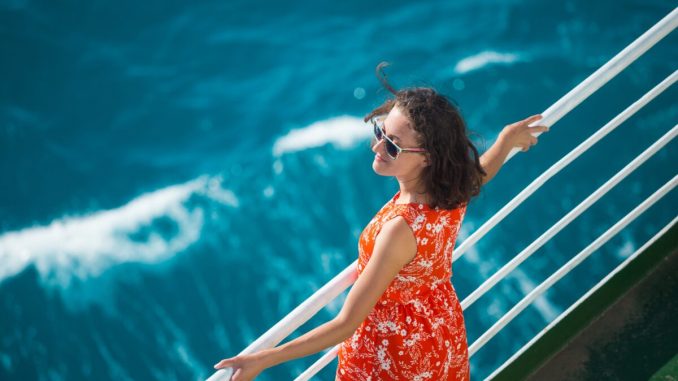

Research has affirmed the psychological benefits of green spaces, but what about blue spaces?
When I need to relax, I think about a particular beach in the Caribbean. I’ve only been there once, but it’s so profoundly beautiful that I go back to it time and again in my mind.
The lush hillside above gives way to over a half-mile of clean white sand. The beach is punctuated with just enough palm and sea grape trees to give you some shade from the Caribbean sun. And the fineness of the sand extends far into the water, turning it into a turquoise blue that looks like it’s lit from beneath.
Why am I telling you this? Well, because this beach is my happy place. Even though I can’t go there every day, I can conjure it up in my mind. My body doesn’t know the difference between real and imagined, so it reacts as though I’m lying on a blanket on the sand, listening to the waves gently lapping at the shore.
And there’s more. My beach is just one of the countless bodies of water throughout the world that are considered to be blue spaces. But before talking about the blue, let’s talk about the green.
You may have heard about the healing potential of green spaces. In the past 20 years, a great deal of research has discovered the benefits of spending time in natural green spaces, such as the woods and parks. Scientists have discovered that spending time outdoors in green landscapes, called forest bathing, can help lower your blood pressure, decrease stress, boost your immune response, and help ease feelings of depression.
Now, scientists are beginning to examine the effects of water-based environments on your health. One study surveyed 18,000 people in 18 countries. The results, while self-reported, found that being near the water helps to promote mental and physical well-being. Other research has documented that people who live near the water have a lower risk of premature death and experience a decreased risk of being obese, as well as reporting being in better mental health than people who don’t live near water.
There are a few reasons why being near blue space is so therapeutic. One of the best-known books on this phenomenon is “Blue Mind: The Surprising Science That Shows How Being Near, In, On, or Under Water Can Make You Happier, Healthier, More Connected, and Better at What You Do,” by Wallace J. Nichols. If you really want to dive into the topic, Nichols will give you an ocean of information about the therapeutic benefits of being near water.
While the research is early, there are a number of intuitive reasons that being near water is so beneficial, and one is that the sound of moving water is relaxing. Listening to the rain, a babbling brook, or waves splashing against the shore is peaceful. I know firsthand that when I have a hard time falling asleep, I plug in a recording of a gentle rainstorm, waves on a beach, or a mountain stream. I never get to the end of any of them because I’ve drifted off to sleep. And I’m sure I’m not alone—these recordings work because the sound of water is soothing and produces a sense of calm.
Also, people tend to be more active when they’re around water, and that’s a good thing. Walking along a lakeshore or strolling along a beach, kayaking, swimming, and paddling are all examples of ways that water inspires people to move their bodies. And water activity can be emotionally healing, too, as in the case of surf therapy or scuba programs that help veterans with post-traumatic stress.
Water is also restorative when it’s an intentional component of a landscape, especially in urban areas. A water feature is relaxing, visually pleasing, promotes activity, and can actually help to cut the heat. When you think about it, the fountains in Rome, the River Walk in San Antonio, the canals of Venice or Amsterdam, or the Tidal Basin in Washington all enhance not only the landscape, but also the quality of life for the people in those cities.
And finally, the beauty of water is that it doesn’t matter what shape it takes in order to be therapeutic. It can be a pond, river, waterfall, ocean, or a fountain—all of these water features are attractive and make you feel better. I instinctively know how healing water can be when I walk along the creek that runs by my house.
Lynn Jaffee is a licensed acupuncturist and the author of “Simple Steps: The Chinese Way to Better Health.” This article was originally published on AcupunctureTwinCities.com





Be the first to comment